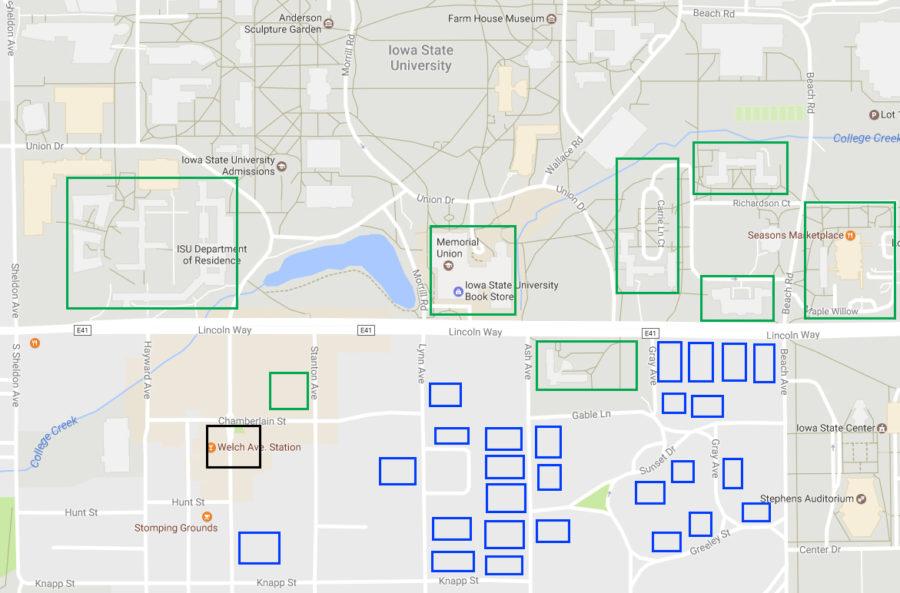Campustown shooting: Community receives no timely warning
An ISU Alert was not distributed following the shooting in Campustown on Sunday morning. Green boxes illustrates University housing. Blue indicates Greek housing. Black shows where Ames Police blocked off the crime scene. This map highlights a majority of University housing and Greek housing, but not all according to Google Maps.
February 20, 2017
Members of the Iowa State community received no timely warning after three people were shot in Campustown early Sunday morning.
Under the Clery Act, the university is required to send a timely warning to all students, faculty and staff in the event of possible threats to the community.
Iowa State made a decision not to send out a notification to students after Sunday’s incident. The Iowa State Police determined that the imminent threat had passed.
“Please know that based on the information at that time, ISU Police was able to quickly determine the threat to the ISU community had been neutralized and the community was no longer at risk,” Aaron DeLashmutt, interim police chief, said.
The department instead retweeted the press releases from the Ames Police Department and shared them on Facebook.
These messages, however, do not reach students, faculty and staff who do not have social media.
With student housing, greek fraternities and sororities surrounding the area, students may have been concerned after hearing the sirens of emergency vehicles early Sunday morning.
According to Google Maps the green is University housing, blue is Greek housing and the black was the area blocked off from the shooting. pic.twitter.com/74IoVRSbMY
— Sarah Müller (@SarahAMuller1) February 20, 2017
“An immediate threat encompasses an imminent or impending threat,” DeLashmutt said. “At the time the shooting happened, it was an imminent threat. However, it was over so quickly, mere minutes, there was no time to issue an alert.”
DeLashmutt said sending emails after the fact when there is no longer a threat to the community could lead people to disregard their emails.
By restricting emails to when there is an ongoing threat, DeLashmutt hopes to maintain “immediate attention from our community” and “provide them with some call to action.”
In August 2016, Iowa State did not issue a warning after a student committed suicide.
Since the start of the fall 2016 semester, the university has sent out five timely warnings. All warnings were related to sexual assault.

















